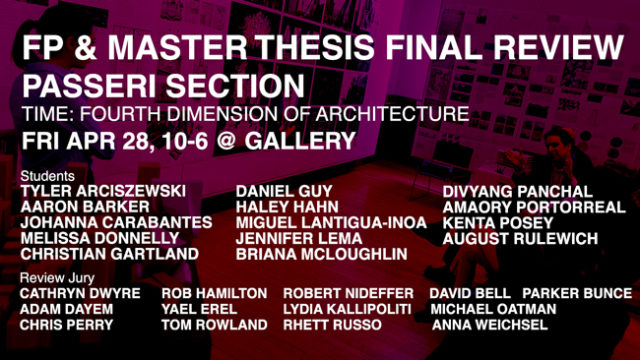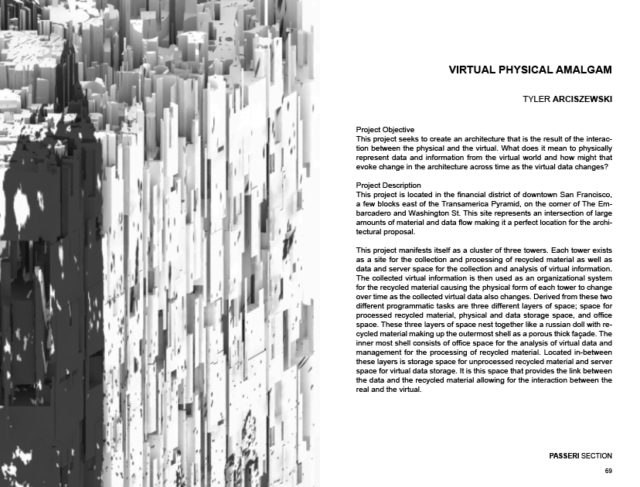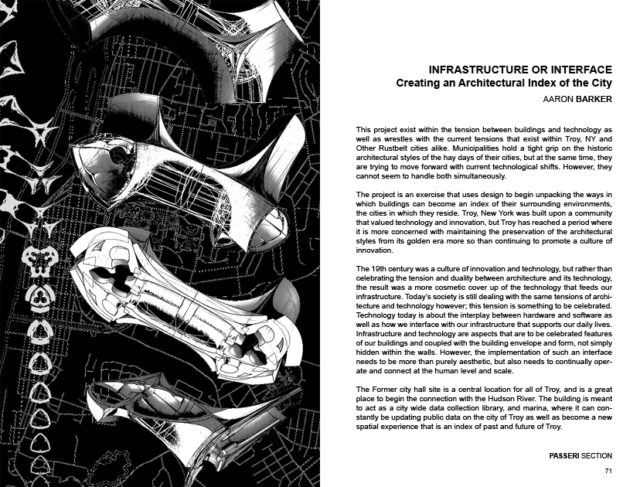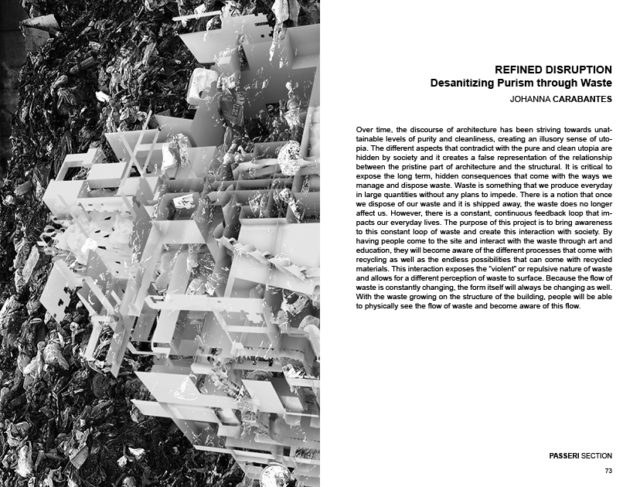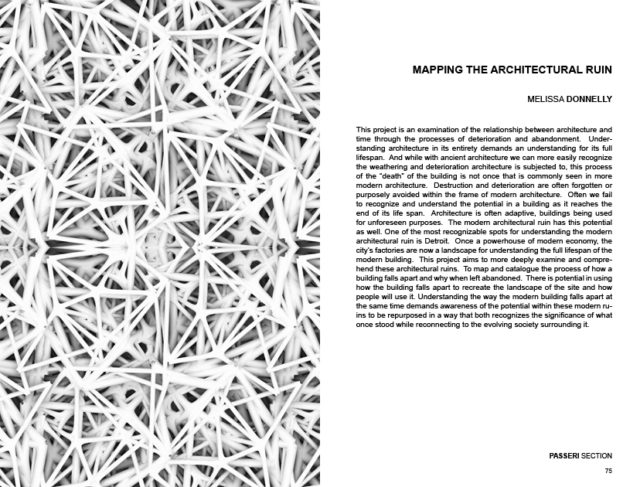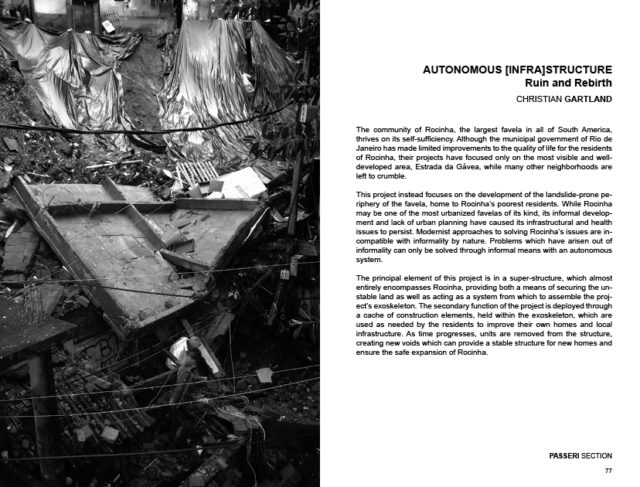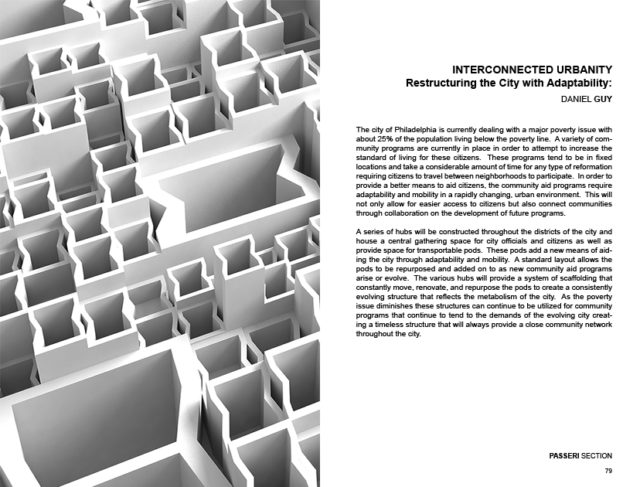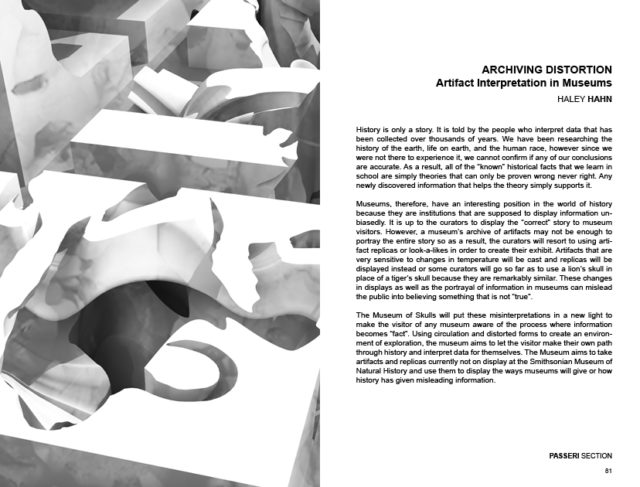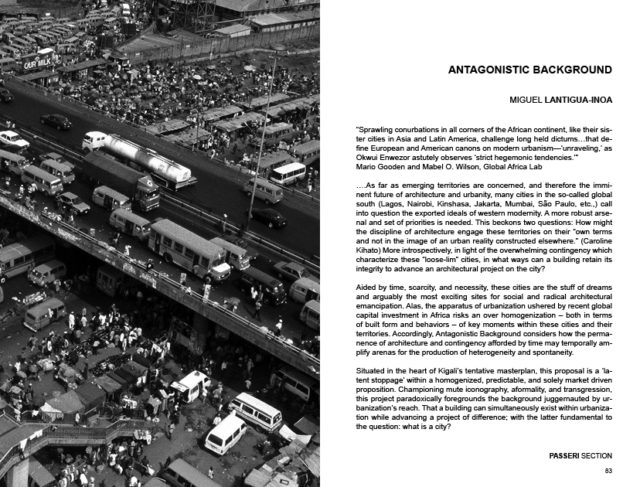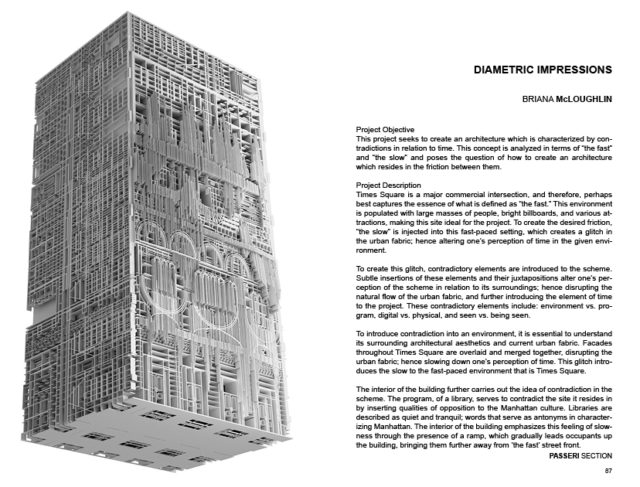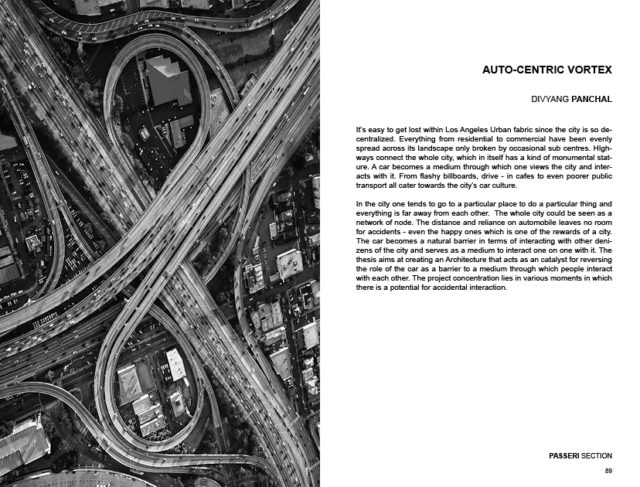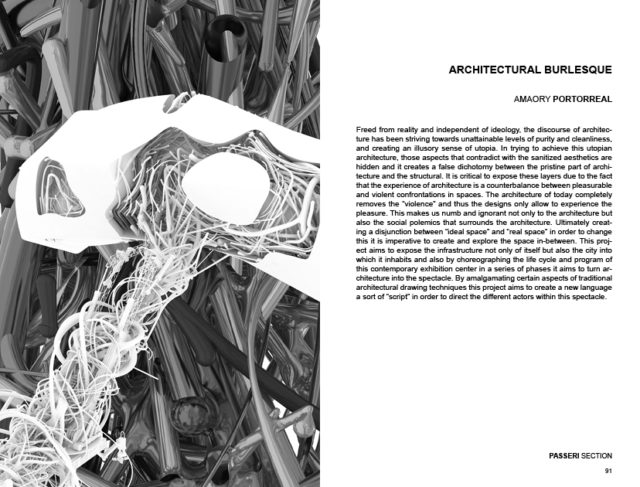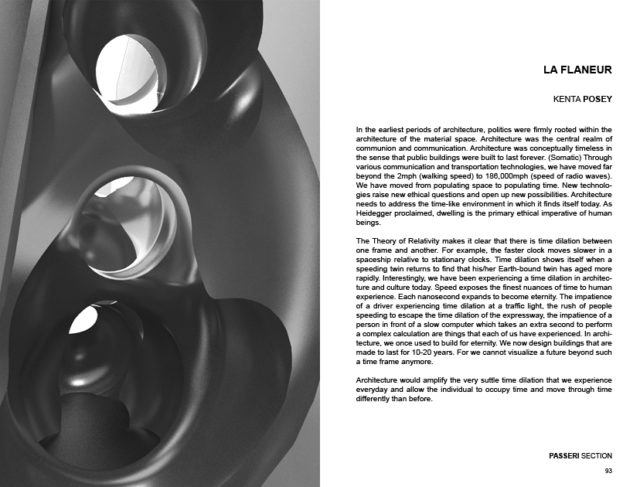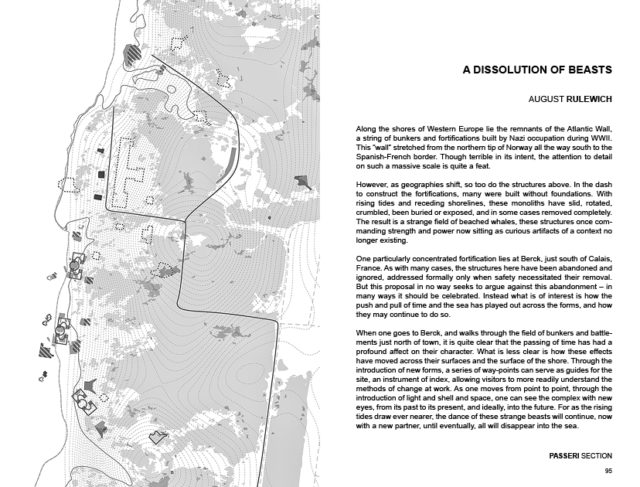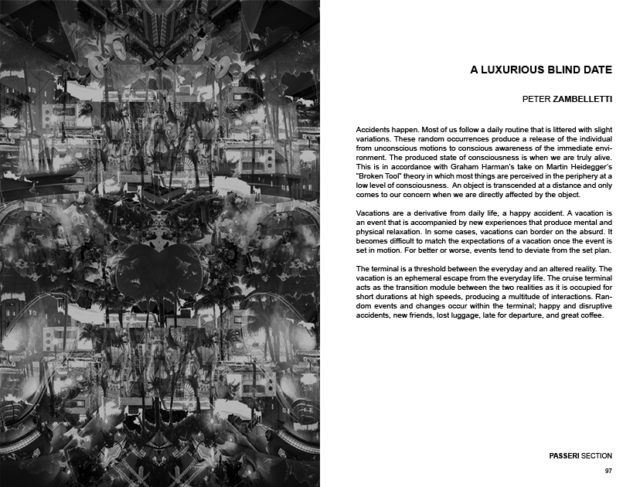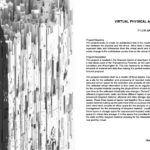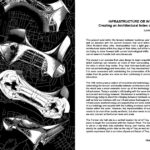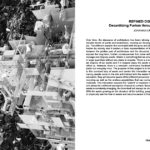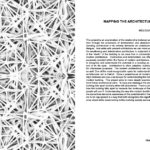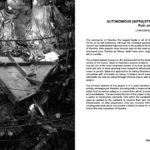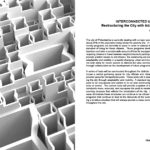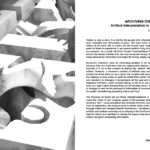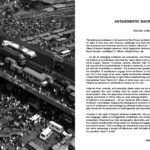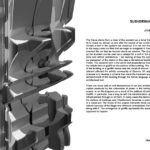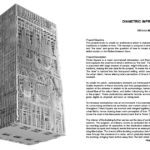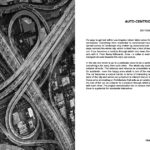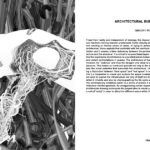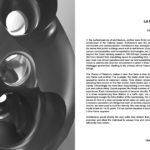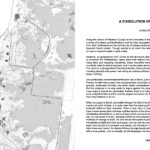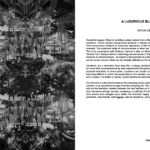Final Review: Final Project / PASSERI Section
Final Review: Fri April-28 / Gallery 10-6pm:
TIME: FOURTH DIMENSION OF ARCHITECTURE_
STEFANO PASSERI section
Students: Tyler Arciszewski – Aaron Barker – Johanna Carabantes – Melissa Donnelly – Christian Gartland – Daniel Guy – Haley Hahn – Miguel Lantigua-Inoa – Jennifer Lema – Briana McLoughlin – Divyang Panchal – Amaory Portorreal – Kenta Posey – August Rulewich.
Faculty: Stefano Passeri
Guest Critics: Cathryn Dwyre (Pratt) – Rob Hamilton (HASS) – Robert Nideffer (HASS)
SoA Critics: David Bell – Parker Bunce – Adam Dayem – Yael Erel – Lydia Kallipoliti – Michael Oatman – Chris Perry – Tom Roland – Rhett Russo – Anna Weichsel.
As an architect, I am trying to make architecture a better performer.
Cedric Price
CASE STUDY 1
Ise Jingu, a small temple in rural Japan, has been under construction for over two thousand years and there is no indication that it will ever be finished. The scheme comprises two identical, adjacent sites: a cluster of four timber structures, the temple itself, sits on one site, while the other lies vacant. Since 4BCE, every 20 years, local craftsmen have been building an exact replica of the temple on the empty plot using the existing structures as a blueprint. Once the new temple is complete, the old one is dismantled and its materials recycled in the nearby town of Mie. By engaging time in its design, Ise Jingu collapses architectural permanence and impermanence into a single process.
CASE STUDY 2
In 1961, the British architect Cedric Price designed the Fun Palace, a cultural center able to transform into virtually any spatial configurations over the course of a predetermined lifespan. The project was designed as a steel truss structure with movable partitions for flexible enclosure in order to be highly responsive to the desires of its occupants and to environmental factors—its architecture would adapt according to its use and deterioration. Choreographed to last exactly two decades, the Fun Palace was designed to disappear without leaving a trace. Although it was never built, Price nonetheless resolved this influential scheme with engineering precision. In the process, he addressed groundbreaking issues of audience participation, feedback loops, and network theory in architecture.
THE PROBLEM
These examples provide us with a glimpse of the possibilities that open to architects when they acknowledge the importance of time. Unfortunately, this attitude is extremely rare in the field. The uncertainty of change, the dynamism of incompleteness, and the inevitability of impermanence have long been eschewed in favor of the notion that architecture must first and foremost be static and permanent.
Several economic and cultural factors suggest that this notion is no longer tenable. Volatile trends in global markets foster a fluid urbanism in which increasingly transient constructions are often replaced even before they deteriorate. Additionally, as Rem Koolhaas pointed out,2 recent advances in science and technology have embedded a sense of duration even in what we thought were the most inert elements of architecture: Bioconcrete floors track our movements and fix their own cracks, intelligent walls learn our atmospheric preferences according to time of day, and interactive windows calibrate daylight intake and augmented reality scenes. Given this state of affairs, it is both urgent and desirable for architecture to explore the untapped realm of time.
THE STUDIO
This section will explore strategies to expand the discourse of architecture beyond three-dimensional Euclidean space toward a four-dimensional space-time continuum. We will concentrate on six main categories of duration: repurposing and demolition, energy production and consumption, accidents and glitches, memory, context, and participation. In the Fall Semester, we will simultaneously develop a discursive approach to the topic and proto-architectural design studies. Through the concept of defamiliarization,3 we will extract and articulate what is strange, surprising, and interesting in the temporal processes that are constantly at play but frequently overlooked in the built environment. For the design studies, we will investigate the relevance of certain mapping methods, biologic and mechanical lifecycles, and film. The Spring Semester will be dedicated to the translation of this body of work into a resolved architectural scheme.
///

